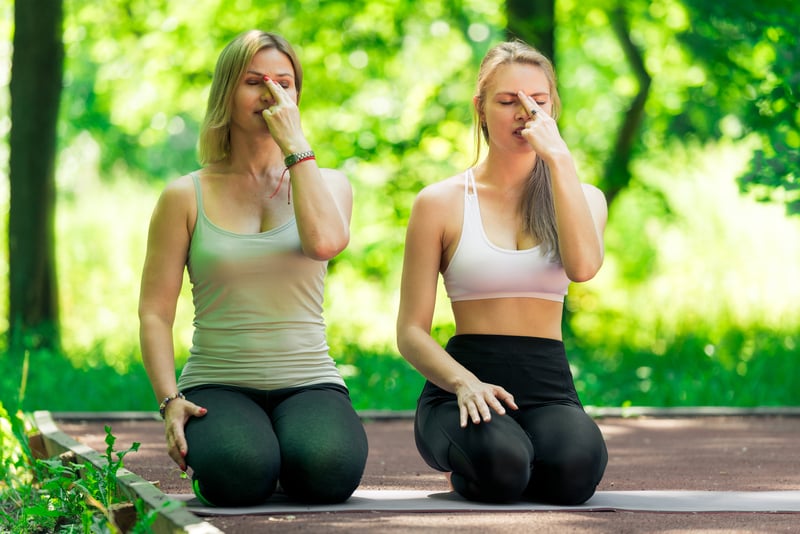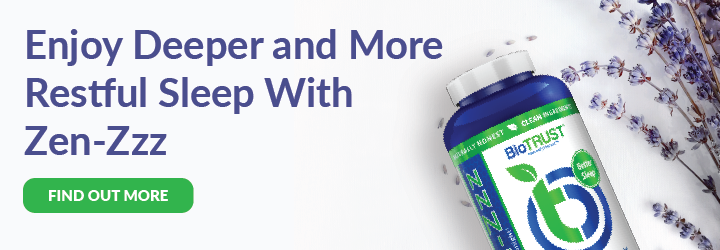Breathing Exercises: 7 Ways to Exhale Your Anxiety and Relax

In the wake of so much unrest and uncertainty in our daily lives, it’s no wonder most of us are left feeling stressed and anxious much of the time. Did you know there is a healthy way for you to combat this stress and anxiety? It’s as simple as using breathing exercises for anxiety. It’s true. You can use your breath effectively to calm down, breathe out the stress, breathe in the calm, and lessen your anxiety.
Two Types of Breathing
Most of us probably take breathing for granted. It is an interesting concept because breathing itself can be both an involuntary and voluntary action. While most of the time, your breathing is not controlled consciously, there are times when you will want to take charge of your breathing in order to calm down and reduce anxiety.
There are two basic ways to breathe. One involves breathing short, shallow breaths that occur in the chest. This type of breathing is called thoracic breathing. Thoracic breathing can leave you short on oxygen with carbon dioxide levels higher than they should be. This can cause you to feel dizzy, tense, panicked, and stressed. Normally, when you’re feeling upset, your breathing gets shortened, resulting in the cascade of negative effects mentioned above.
This type of stress-response breathing has become the norm for far too many of us. But, learning the second way of breathing can go a long way toward helping you relax and feel better.
The other form of breathing is called diaphragmatic breathing, or breathing into your abdominals. This involves taking in a deep breath, but instead of stopping when your chest fills, continue to breathe in until you feel your belly fill with air. A good way to tell if you’re doing it right is to lie down with one hand on your chest and the other on your belly. Take in a breath and watch as the hand on your chest begins to rise. As you take in more air and a deeper breath, the hand on your belly should rise accordingly.
Learning to breathe deeply can take time, patience, and a lot of practice, but it’s worth it! Check out some of the many benefits of breathing exercises for anxiety.
What are the Benefits of Breathing Exercises for Anxiety?
Besides keeping you alive, your breath has some pretty cool functions, one of which is to help you reduce anxiety. In addition,
- Breathing deeply can help you slow down.
- Deep breathing can help you focus.
- Breathing deeply can help you go to sleep
- Breathing correctly has been shown to help improve test scores.
- Deep breathing has been shown to help ease depression.
- Deep breathing can help you slow your heart rate.
- Breathing deeply with breathing exercises can help you reduce anxiety.
- The mindfulness needed for deep breathing causes you to naturally calm down.
The 7 Best Breathing Exercises for Anxiety
Now that you know you can slow down and breathe through your stress, and you’re aware of the many benefits of using breath to calm down, it’s time to try it for yourself.
1. Alternate Nostril Breathing—this type of breathing originates with the practice of yoga. Those who engage in yoga on a regular basis can become masters at breathing, and alternate nostril breathing is just one of their many tools for anxiety relief.
To do this exercise, close off your right nostril by placing your finger against it. Breathe in a full breath through your left nostril. Next, hold both nostrils closed for a moment. Last, close off your left nostril and breathe out through your right nostril. Keep alternating nostrils for breathing in and breathing out.
2. Pursed Lips Breathing—this is another yogi favorite. Breathe in deeply and then purse your lips (as if you were going to suck on a straw). Blow your breath out through your pursed lips slowly. You’ll automatically have to exhale slowly due to the pursed lips, which will allow you to slow down and get calm.
3. Equal Breathing—simply put, this is breathing in for an equal amount of time as you breathe out. For example, breathe in for a count of four and then exhale for a count of four. You can change the amount of time it takes you to inhale and exhale; just ensure those times are the same.
4. 4-7-8 Breathing—similar to equal breathing except that you’ll breathe in for a count of four, hold your breath for a count of seven, and then exhale for a count of eight.
5. Box Breathing—similar to equal breathing, you’ll breathe in for a count of four but then you’ll hold your breath for a count of four before exhaling for a count of four. Upon exhaling, wait for another count of four before inhaling again.
6. Resonant Breathing—this is basically just slow breathing. Breathe in slowly through your nose for six seconds and then exhale slowly through your nose for six seconds. Focus on the way your body feels as you inhale and exhale. This focus allows you to forget the stressors of your day and concentrate solely on the here and now.
7. Cardiac Coherence Breathing—this type of breathing has you mesh your breathing with your heart rate. Begin by inhaling over a span of five seconds followed by exhaling over a span of five seconds. This prolonged slow breathing engages the vagus nerve, which helps control activity in internal organs, thereby allowing you to slow body functions, reduce blood pressure, and promote a sense of well-being.
We all need to take a breath from time to time. Give these breathing exercises for anxiety a try to see which one best helps you calm down, breathe out the stress and breathe in the calm.




 7 Signs Your Body is Seriously Low on Collagen (not just wrinkles)
7 Signs Your Body is Seriously Low on Collagen (not just wrinkles) Health Expert: "Turmeric Doesn't Work (unless...)"
Health Expert: "Turmeric Doesn't Work (unless...)" 3 Warning Signs Your Probiotic Supplement is a Total Waste
3 Warning Signs Your Probiotic Supplement is a Total Waste

